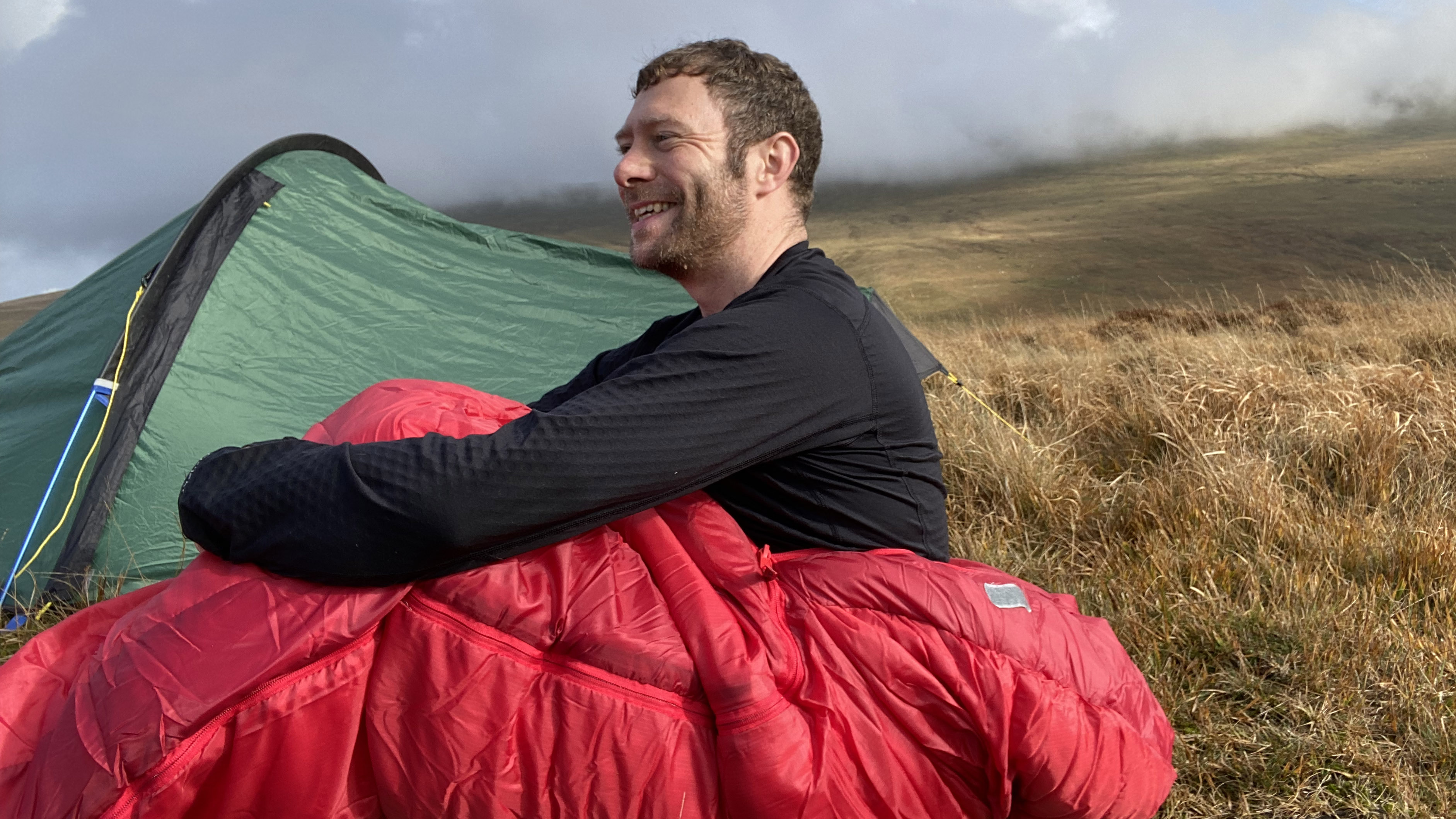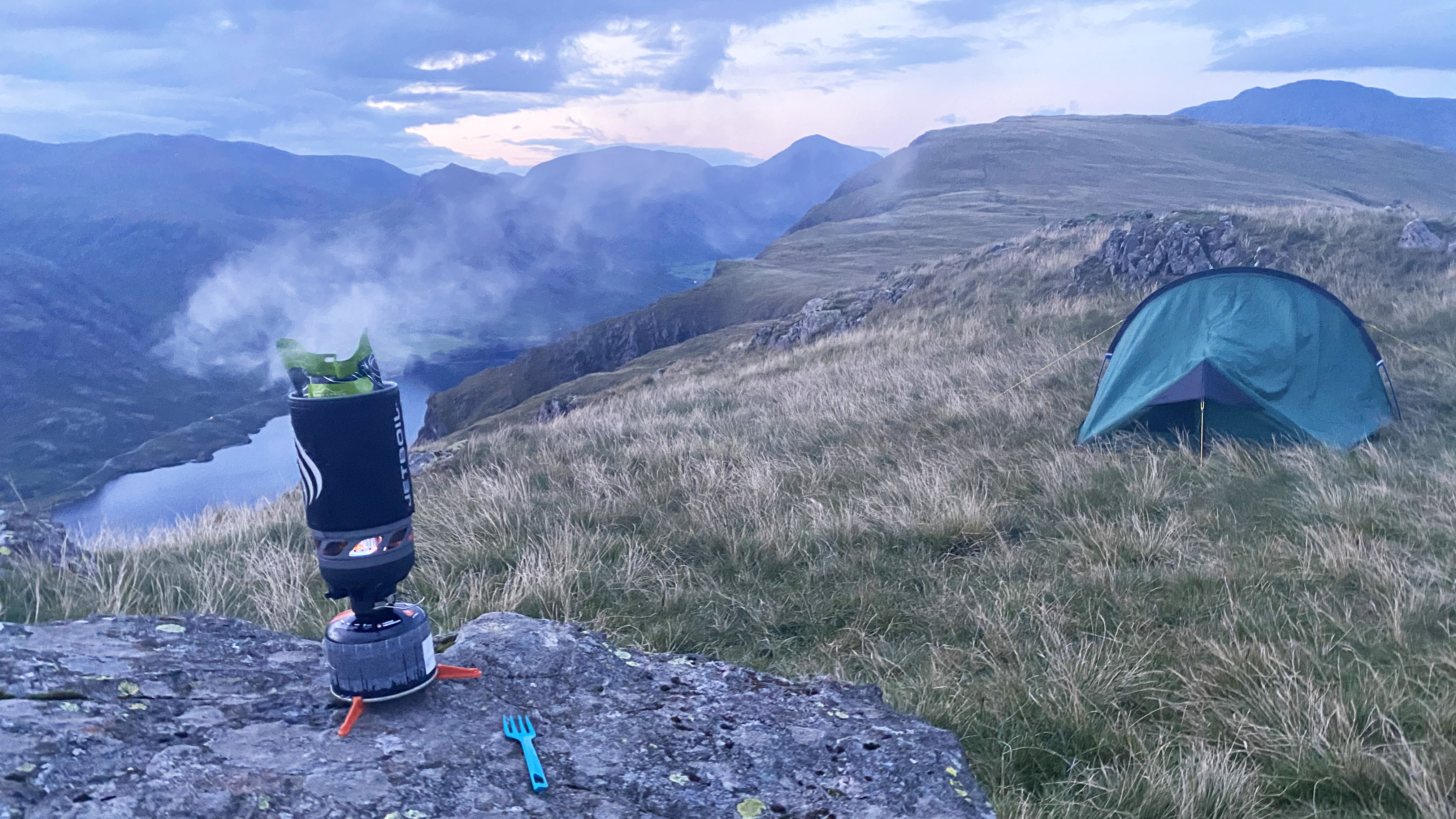How much fuel to bring backpacking for short wild camping trips to multi-day epics
Our guide on how much fuel to bring backpacking will assist your planning, save you weight and enhance the enjoyment of your overnight trip

Knowing how much fuel to bring backpacking is a handy weight saver on shorter wild camping trips and a crucial part of the plan when it comes to longer wilderness thru hikes. An expedition can quickly go south (not literally, of course) if miscalculations leave you in the middle of nowhere with no means of cooking food or boiling water.
If you run out of fuel, your meal options are going to diminish or vanish entirely – depending on your meal plan. Just as the best camping stove won’t function without its fuel, you won’t function properly without yours. Food is your fuel, it’s what propels you along the trails, powers your legs on every summit push and keeps you going on those long descents. During high-altitude expeditions, you may need your stove to melt snow for drinking water. In these kinds of scenarios, having the enough fuel becomes a matter of life and death.
On the flip side, many hikers err too much on the side of caution, carrying way too much fuel for their needs, which can severely affect their experience. Weight is everything on an expedition. Your hiking backpack will already be pretty hefty. When every gram counts, you don’t want to be carrying a load of surplus fuel.
Meet the expert

As a qualified Mountain Leader, Alex is a veteran of overnight wild camping trips and loves pitching up for a backcountry sleep, especially in the mountains. As someone who like to travel fast and light, knowing how much fuel to bring helps him keep the gram count down.
Today's best deals
The basics
- Calculate how many boils you expect to do during your trip
- Generally speaking, stoves shouldn’t use more than 10g of fuel per boil
- Also bear in mind any continuous boils, such as when cooking noodles or rice

Without getting too scientific, how much fuel you will require will depend on how many times you are expecting to bring water to the boil. A good thing to do is jot down an expedition meal plan in advance. Let’s say you are spending two nights wild camping and plan to have two rehydrated meals, two morning coffees and two porridge breakfasts. That’s six boils.
Generally speaking, stoves shouldn’t use more than 10g of fuel per boil for the amount of water required during backpacking. So, for the camping trip above, you should be able to get away with just 60g of fuel. Of course, we don’t want to just ‘get away with it’ and having some spare is reassuring, so for a solo backpacking weekend 100g of fuel will be sufficient. If you’re going for more days, add another 10g of fuel for each boil, just to be safe.
Another factor to bear in mind is if you are cooking camping meals that involve rice, pasta or other ingredients that require a sustained boil, you are going to use more fuel. If it takes four minutes for your stove to bring the water to the boil and then you leave it on for a further eight minutes, you will have used three times the amount of fuel required just to get water boiling. However, if your stove has a simmer mode, this can be a handy fuel saver.
Get scientific and get to know your gear
- Look at the stated performance of your stove and do some calculations
- Weighing your canisters after each trip will tell you how much fuel you've used
- You can also test how much fuel your canister uses to bring water to the boil at home by weighing before and after

We’ve covered some basics there, but every stove and fuel brand are different so it’s worth getting to know yours. First of all, your canisters should indicate how many boils you can expect from them. For example, a 230g Jetpower canister when used with an integrated Jetboil stove says it can power 55 boils. 230g divided by 55 is 4.18g, so in theory you will use just over 4g of fuel per boil. You can then have 4g per boil in mind when you are thinking about your meal plan.
All the latest inspiration, tips and guides to help you plan your next Advnture!

You can test how much fuel your stoves are actually using by weighing your canisters before and after a trip. This will help you plan for similar trips in the future. Another option is setting up a quick experiment at home. First, weigh your canister, next bring a liter of water to the boil and finally weigh your canister again. This will show you how much it has used for one boil.
You can also work out how much fuel is left in a partially used canister by keeping an empty canister and weighing it as a reference. Subtract this from the weight of your partially used canister to work out how much fuel you’ve got left.
Consider the environmental variables
- Windy conditions will lower your stove's effeciency
- Colder water requires more energy, hence more fuel, to bring to the boil

This all sounds great in theory, but the outdoor environment is a complicated place. There are many environmental factors that affect how much fuel your stove uses. Windy conditions can lower your stoves heat efficiency by up to half, which means it will use twice as much fuel. With this in mind, having a windscreen or finding a sheltered spot to cook up is crucial.
The colder the air temperature, the colder any water you’re heating up will be. Obviously, colder water takes longer to bring to the boil and will therefore use more fuel. Another factor is atmospheric pressure, which decreases with elevation. This actually lowers the boiling point of water, meaning that water boils faster at high altitudes. However, it’s also more likely to be windy and will almost certainly be colder. Add in the fact that some foods can take longer to absorb water at higher altitudes, meaning they don’t cook as fast, and you soon see that a complicated picture emerges.
Alex is a freelance adventure writer and mountain leader with an insatiable passion for the mountains. A Cumbrian born and bred, his native English Lake District has a special place in his heart, though he is at least equally happy in North Wales, the Scottish Highlands or the European Alps. Through his hiking, mountaineering, climbing and trail running adventures, Alex aims to inspire others to get outdoors. He's the former President of the London Mountaineering Club, is training to become a winter mountain leader, looking to finally finish bagging all the Wainwright fells of the Lake District and is always keen to head to the 4,000-meter peaks of the Alps. www.alexfoxfield.com

